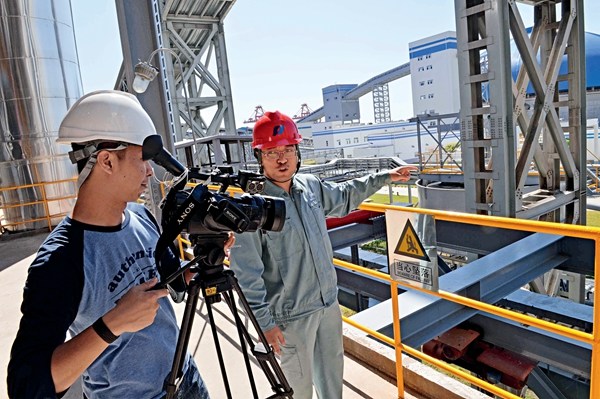According to the Ministry of Commerce, by the end of 2016, Chinese enterprises had established 77 economic cooperation zones in 36 countries, with a total investment of US $24.19 billion. Of these, 56 are distributed in 20 countries along the Belt and Road, with an accumulative investment of US $18.55 billion, and host 1,082 enterprises that generated a gross output value of US $50.69 billion, paid US $1.07 billion in tax to host countries, and created 177,000 job opportunities.

In addition, based on their development advantages and functional orientations, about 50 node cities along four economic corridors will be chosen as sites to build industrial parks covering agriculture, industry and tourism.
Promoting Industrial Upgrading
Zhang Qizi maintains that low-and-middle-income countries must achieve industrial upgrading, through which to boost economic growth, before they can join the ranks of high-income countries. This necessity is shared by all countries along the Belt and Road, including China.
At present, most of these countries face the risk of being locked in the low-end part of the global value chain. Although emerging economies have steadily increased their participation in the value chain and gained economic growth, they are still in the development phase as regards utilizing resources and labor force, and must contend with the risk of deterioration of their balance of trade. To be specific, resource-oriented trade-benefit-structured countries have a mainly unitary economic structure, and rely heavily on external demand. They therefore inevitably face higher risks stemming from the international market. Stagnant international markets, slow world economic gains, and fluctuating energy prices all have strong impact on domestic economy. And the advent of new energy signals the end of a golden age for these countries.
As labor-intensive economies mainly rely on foreign technology and capital they may easily become locked in the low end of labor division. Bearing in mind competition emanating from other developing countries, the benefits of international trade must be squeezed to the minimum. The high energy-consuming and heavily polluting manufacturing industry creates negative effects such as resource exhaustion and environmental deterioration. Moreover, recipient countries of labor-intensive service outsourcing must also contend with other risks, such as lagging domestic industrial development, being locked into low cost outsourcing, and low trade benefits. For agricultural countries, their relatively short domestic value chain inevitably causes problems like low export value-added and industrial employability capability, as well as risks like natural disasters, price fluctuations, and structural changes in market demand.
The cooperation between China and other countries can neither be restricted to lower-end industry nor totally rest on current level and scale. In addition to giving play to China's traditional advantages, it is necessary to jointly create and cultivate new superiority based on multi-cooperation, so creating greater impetus for high-end industrial development, exploit a new trade cooperation growth pole, and elevate trade level and quality.
In 2015, China's National Development and Reform Commission, Ministry of Foreign Affairs, and Ministry of Commerce jointly issued the document defining the "vision and action" on jointly building the Belt and Road. Based on the principle of mutual benefit and win-win result, it will promote deep cooperation between such emerging industries as information technology, biology, and new energy and materials, thus establishing an entrepreneurship and investment cooperation mechanism.
Zhang holds that, in addition to giving full play to its own advantages, China should expedite an open and innovative policy and introduce a third party to the construction of the Belt and Road. They can jointly cultivate new markets, develop new technologies, and promote the industrial upgrading and high-end industry of countries along the Belt and Road.
Source: China Today


















































